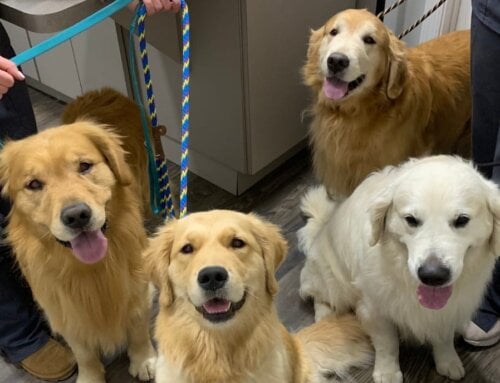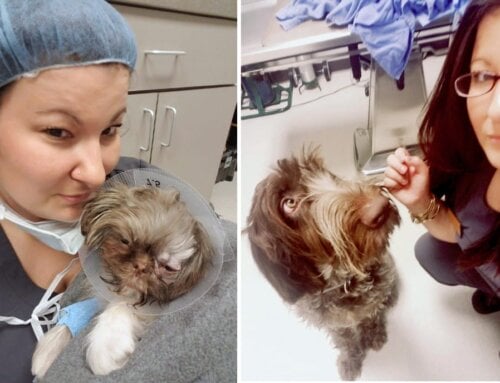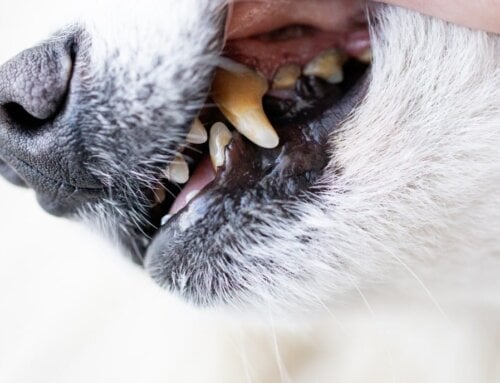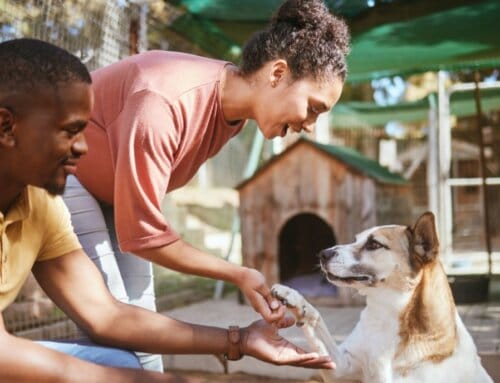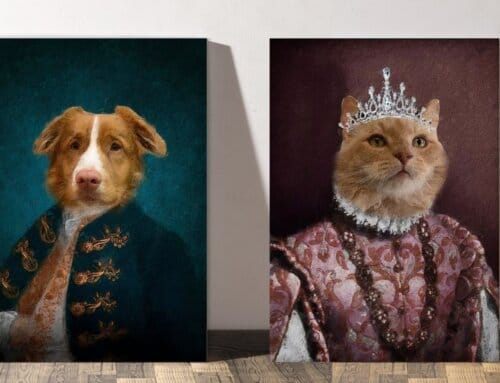By Dr. Heather Brookshire
When it comes to helping animals in desperate situations, it often takes a village—communities, volunteers and medical professionals—working together to create change.
This certainly was the case for a dog we treated recently at Animal Vision Center of Virginia, through the efforts of a colleague, Dr. Abigail Schmidt, an associate veterinarian with People for the Ethical Treatment of Animals (PETA).
During the region’s harsh winter, field workers with PETA’s Community Animal Project (CAP), learned of a mixed-breed dog (we will call her “Billie”), struggling to survive freezing temperatures in an outdoor pen. PETA fieldworkers visit underserved communities daily, to render aid to animals in need, mostly dogs kept outdoors 24/7. They deliver dog houses, straw bedding, food , toys, treats and preventatives (free of charge) to neglected animals.
Billie’s situation was dire, there was no bedding, nor food or water in the cramped pen, and it appeared she was not receiving proper attention and care from her owner.
“Not only was the dog struggling to stay alive in the sub-freezing temperatures, but she was terrified of her own humans,” said Rachel Bellis, Director of Local Affairs, with PETA.
The CAP team worked with the little dog’s owner to facilitate a “surrender.” Before relocating Billie to a shelter/foster setting, Dr. Schmidt performed a physical exam. That is when she noted the tell-tale signs of a prolapsed nictitans gland in the dog’s left eye.
“I knew that she needed eye surgery to replace the gland,” said Schmidt, who has a background in high volume spay/neuter surgery and emergency veterinary medicine. “While many general practitioners are capable, the veterinarians on our staff did not have current training on the procedure, nor the appropriate tools to perform the surgery. It is not something that just anyone can do.”
Understanding Prolapsed Nictitans Gland and its Impact on Billie
The condition, commonly known as “Cherry Eye,” occurs when the gland of the nictitans (the third eyelid) protrudes from its normal position, forming a red or pink mass. While the exact cause of the prolapse is not fully known, it is often due to overstimulation of the immune tissue present in the third eyelid and/or genetic weakness in the connective tissue structures that keep the gland in place. It is more common in younger dogs, particularly when exposed to new environmental allergens for the first time.
These factors increase the chance the gland will prolapse out of the normal position at the base of the third eyelid. If left untreated, Cherry Eye can cause inflammation, dryness, infection and discomfort for the animal. By replacing the gland, we help to restore proper tear production and prevent these complications.
Partners in Veterinary Care
I know Dr. Schmidt through our veterinary community. She approached me to see if Animal Vision Center of Virginia could perform the surgery to replace Billie’s gland. In addition to supporting a pet in need, my team and I saw an opportunity to invite our colleague to observe the surgery to see the procedure firsthand.
Just as with humans, animals rely on their vision to connect with the world around them. Keen eyesight is crucial for stray or rescued dogs because it directly impacts their ability to navigate the world and engage in essential activities such as finding food, avoiding dangers and bonding with humans.
Dr. Schmidt knew, as I do, that pets with good eyesight can experience a better quality of life, as they can engage more fully in activities like play, exploration and interaction with their humans. This also plays a role in their emotional well-being.
“Shelter settings can be stressful for animals; imagine not having all your faculties available to you. If an animal cannot see well, it is a scarier world for them,” said Dr. Schmidt. “Billie’s eye looks amazing now. The third eyelid is back where it is supposed to be.”
It was our pleasure to help Billie “see” a better life and equally rewarding to provide a veterinary colleague with the opportunity to gain additional experience in the surgical correction of this procedure. Collaborations like this between general veterinarians and specialty practices are invaluable. The more we learn from and help each other, the stronger our veterinary community will be.
Animal Vision Center of Virginia
Providing quality ophthalmic care for animals of all shapes and sizes, Animal Vision Center of Virginia has practices in Chesapeake and Virginia Beach. Their care team provides the highest level of technology, education, skill and compassion, from consultation to complete ophthalmic services. Learn more at: aninmalvisioncenterva.com.
People for the Ethical Treatment of Animals (PETA) Community Animal Project
Through PETA’s Community Animal Project (CAP), workers help animals in need through delivery of doghouses, straw bedding, food, flea/tick and fly-strike prevention, deworming medication, toys, treats, and more—all free of charge. The team also provides low- and no-cost spay/neuter services on its fleet of mobile clinics and transport animals to and from their appointments. For details, visit: investigations.peta.org/petas-rescue-team.











